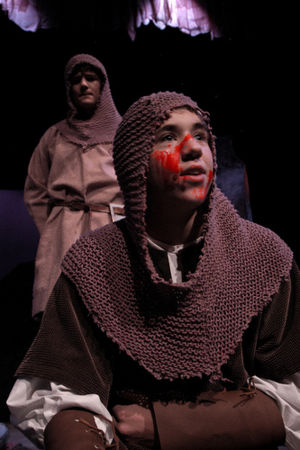Macbeth (play)

Macbeth has been performed frequently all over the world since its first appeared in the early seventeenth century. This high school performance took place in Washington, USA in 2005.
Macbeth, fully The Tragedy of Macbeth, is one of the best-known plays of William Shakespeare. It was written in about 1606 and tells the story surrounding the murder of a Scottish king and the rise and fall of his killer, Macbeth. The play is a tragedy that weaves a tale very loosely inspired by the existence of the real King Macbeth of Scotland (ruled 1040-1057) with supernatural imagery and themes of greed, revenge, bloodshed and curse.
Macbeth was first published in the First Folio of 1623, seven years after Shakespeare's death, but it would have been performed at London's open-air Globe Theatre soon after its completion. Shakespeare may well have had in mind the newly-crowned King James I (1603-1625), already James VI of Scotland, whose accession had united the throne of his country with England's after centuries of war.[1] In 1605, James had narrowly avoided death in the Gunpowder Plot, when Catholic conspirators tried to blow up the House of Lords. Regicide, or murder of a monarch, was therefore a familiar topic in 1600s England.
The play seems to have been substantially edited between its earliest appearances on stage and its 1623 publication, with new scenes appearing in the Folio version[2] and evidence of material excised (for example, the play mentions that Macbeth's wife has had at least one child, but they do not appear). Likewise, it may be significant that the play is rather shorter than Shakespeare's other tragedies - Hamlet, Othello and King Lear.[3]
Macbeth is notable for its use of supernatural imagery, such as the appearance of three witches (a possible nod to James I, a keen persecutor of people declared to be so), and the use of darkness: about two-thirds of the play takes place at night. Modern audiences are familiar with the dark stage on which the play is mostly set, but it is worth remembering that any play at the Globe would have been performed in daylight, taking advantage of the open-air venue, and without the benefit of modern theatrical lighting. This is one reason why the play makes reference to darkness and the night; these lines, supplemented with burning torches and candlelight, would have united to create the effect of darkness in what was actually a daylit theatre.[4]